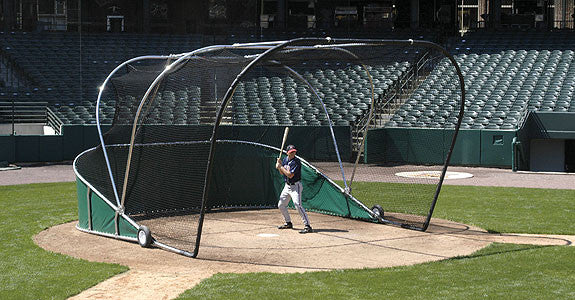In this time of having to stay home bound players are board and on the computer for many hours. But while I advocate for them getting outside and being active there certainly are some activities that they can do on that computer that will improve their mental knowledge of the game and maybe give them insight.
Here's a few that might work for you but please encourage your player and/or yourselves to look the sites using Google or any other search engine and specific questions.
Stay mentally sharp as well as physically getting ready for baseball and softball to start.
======================
http://www.freeonlinebaseballgames.com/
====================
Try this type activity while you are home safe.
When no one around, improve by yourself, one man drills
One of the biggest concerns that coaches and associations have these days is with pitchers and the care of their arms. Ultimately it really is the coach that needs to watch this but parents, associations, leagues, all have different thoughts and recommendations. I ran across this article from USA Today that has some nice information, and while it's not the only thing it certainly is something to consider. One side note in this conversation you as a parent must be aware of how much your son or daughter is pitching because many times a really good pitchers is playing on more than one team and therefore can accumulate more pitches than he/she should throw within a time. Because it's league is only keeping track of that one so you could even get caught up and throwing double what the boy/girl should be allowed. He was a parent need to monitor this.
I have a grandson that played in California, there league went so far as to count 35 pitches against the catcher if he came into pitch. And there league which was 14 and under if a catcher came into pitch he automatically had 35 pitches against out of the 70 possible so this is even a case of a league going a little further toward pitch count and arm care.
It is interesting to note that because of the arm motion softball pitchers can and do pitch huge number of pitches with no arm problems while we should be cautious there are no recommendations for softball, the pitcher will tell you by just looking, listening, and using common sense.
This one came from US a baseball medical and safety advisory committee: and published with their permission.
USA Baseball Medical And Safety Advisory Committee Guidelines
Age Max Pitches Game Pitches Week
8-10 50 75
11-12 75 100
13-14 75 125
15-16 90 2 Games Week
17-18 105 2 Games Week
Ages To Learn The Different Types
Pitch Type Age To Learn
Fastball 8
Changeup 10
Curveball 14
Knuckleball 15
Slider 16
Forkball 16
Splitter 16
Screwball 17
Survey Of Types Of Balls Thrown ~ Ranked Least To Most For Pain Caused
Fastball
Changeup
Curveball
Slider
Survey Conducted By Dr. Joe Chandler, Team Physician, Atlanta Braves on 101 Braves Hurlers In 2000
Parents you need to kind of look at your kids coaches. A lot of coaches are just loud and still have the best of intentions for your players/children. Never allow volume to be equated with bullying, volume usually has little to do with it what you really need to know is what he says to the players and how he treats them then we may be looking at bullying.
This article could help anybody that reads it understand what is meant when bullying is talked about.
Bullying is a growing epidemic in sports. As sports parents, it's critical for you to be prepared to protect your young athletes. If you think this issue won't ever come up in your kids' sports careers, think again. Bully coaches are the number one topic parents write us about at Kids' Sports Psychology.
Have your kids ever had a coach who yelled at, insulted or intimidated them? It's possible they have, but were too embarrassed to tell you. It's important for you to be on the lookout for bully coaches and to take immediate action if you suspect your young athletes are being bullied.
Bully coaches target all kinds of young athletes. They can set their sights on kids who are overweight, small, or who lack confidence, for instance. These coaches also target gifted athletes because they believe their approach will "toughen up" their athletes.
It's important to keep in mind that most volunteer coaches are not trained. Many of them use teaching techniques that their coaches used with them. Some of them don't understand they're acting like bullies. Many coaches will change their behavior if you approach them in an appropriate manner. We've received letters of confession from coaches who say that once they understood how much their words and actions hurt their athletes, they changed their style.
Whether a coach's bullying is intentional or unintentional, your job as sports parents is the same. If your athletes are teased, excluded or otherwise treated badly by coaches, you need to take steps to help keep their confidence intact, stay focused under adversity, and remain in sports.
The bottom line, for you as parents: Be on the lookout for bully coaches and arm yourself with the information you need to take action.
Recruiting Myth
If you are good enough, college coaches will find you
This is an age-old adage that is often heard throughout the recruiting process and is both out-dated and incorrect. These words are often spoken by an older coach who wishes to dismiss any thoughts by the student-athlete or parent that they should market themselves to institutions by sending out their information. The fact is that this statement is true if you are one of the top 100 players in the country, have already received a great deal of accolades by your sophomore year, and most likely already have several scholarship offers in hand. This is simply not true for most college baseball prospects outside of the top 100. The only way they will know about you for sure is if you send them your profile and express your interest in them. Recruiting is now a global process and despite your skills or success in high school, it is extremely easy to be overlooked by college coaches who have thousands of athletes to scout and hundreds of potential venue’s to scout them at. College coaches don’t read your local town paper and they probably don’t attend your games and only the top 1% of high school athletes are truly discovered. Your performance on the field or court will go a long way toward determining whether or not you get a scholarship offer. You need to be getting results that place you near the top of your competition if you want to get noticed. However, there are other factors which will determine whether or not you get an offer including; grades, character, work ethic, coach-ability, etc. Market yourself with truth, determination, follow up, and stay after it.
Whether you're throwing out base runners from the confines of Fenway Park or turning a 6-4-3 double play on a local Little League field, throwing is one of the most important, and physically demanding, aspects of baseball
Just as major leaguers can get a dead arm during spring training, younger players also risk injury as they begin throwing regimens in the spring. The Seven Ball Drill below is a great way to increase arm strength and prepare players for the various throws they will make during the season.
Note: Perform the drill's seven separate steps in sequence to ensure proper arm development.
Baseball Arm Strength Drill
Stand shoulder- width apart, with throwing arm placed upwards at a 90- degree angle. While holding elbow with glove, throw ball to partner using just the wrist.
Sit with legs spread and arm in same position as exercise above. This time use the area from the elbow up to throw ball to partner.
Remain sitting and throw ball by rotating hips and turning upper torso. (Focusing on follow- through is not necessary.) Use the glove arm or elbow to direct throw.
Go to one knee. Throw ball by rotating hips and turning upper torso, as in above exercise. This time emphasize follow- through across the raised knee.
Stand with glove arm closest to partner, and feet shoulder- width apart. Repeat the above steps, concentrating on follow- through. This time throw without moving your feet.
Use all the steps above, this time add a crow hop and throw ball to partner. (Crow Hop: A technique in which you hop forward on your front foot during the wind up of your throw.)
Long toss is the last step. Stand approximately 10 feet apart and toss the ball to partner as quickly as you can for one minute. You can even keep track of the number of catches to turn this into a competition. Emphasize a quick release and concentrate on the ball entering and leaving the glove. Note: For infielders, you can turn this last step into a quick toss by reducing the distance.
By following the steps above, players will find it easier to make all the necessary throws in a game, as well as keep their arm healthy throughout an entire season. A good goal to have, no matter the league, when opening day rolls around.
Baseball Fly Ball Exercise
A dynamic drill used for both infielders and outfielders to work on their jumps and reactions while accelerating to fly balls. The fielder starts from the pre-pitch position. He then uses a quick drop step to open his hips. This creates a direct line toward the ball. A line is formed with 3-4 players. The coach will stand approximately 10 feet in front of players with a ball in his hand. The first player faces the coach and on a command, breaks on the run at a 45 degree angle while looking back at the coach. The coach will then throw a ball slightly ahead of the player which leads to a running catch. After the play, the player returns to the end of the line. The next player in line repeats the drill. This drill can be done to the left, to the right, and straight over the head.
Key Teaching Points
Drop step
The first move for an infielder reacting to a fly ball is a quick drop step. This helps create a direct line to the ball. When the ball is hit directly over your head, it is best to drop step to your glove side, which gives you a little longer reach when catching a ball.
Acceleration
Have the player make his first 2-3 steps as quickly as possible and accelerate to the ball. Remind players to run on the balls of their feet. Pre-Pitch Set Up: Both infielders and outfielders always begin each drill from the proper pre-pitch set up. This means a good athletic position, knees flexed, hands in front of chest, and eyes on the ball.
We are a new team and not all that good, how do I create a positive atmosphere and keep the players motivated and enjoying the game as they play.
The biggest deal here is that you don't worry and you make a huge deal out of the score not being important. What is important is each accomplishment is what you celebrate and just like hitting the ball and running or picking it up and throwing. Your letter indicates that your worrying about motivation, when in truth just playing to be all the motivation they need not sure hundred percent what you mean by motivation. But little kids like that normally just love to play, let them play in different positions and set goals that you know they're going to accomplish. Just like this past Sunday we had three goals--- for six out of the 12 players to hit the ball, to make one out in the field, and scored one run and we were able to do that because of the way the league is built - inning consists of three outs, seven runs, or batting through the order when we change. We know that were going to accomplish almost every one of these and this week we will have a little different set of goals, but that's what were you tell them are going to try to do and have fun. Then after the game we will make comment immediately away from the parents. So is just you and the coaches and the players talking to each other about what you got accomplished today and how much fun it was. Make no mistake about it all you're doing is creating organized play with this age group you're not creating baseball players you're creating social skills, fun, and organizational aspects that they will need to work with. But winning and losing is the last thing that needs to be even brought up.
The very first year I coached we were eight year olds in a 10 under league we were 0-44, and the thing they remember to this very day is that we went to Pizza Hut and celebrated a rainout. but by the time they were 12 years old we were 2nd in the BABE RUTH WORLD SERIES for 12 and under.
Let me know what you think and hope that I've created some thought process.
Coach Arnald Swift
Below is a stock answer for concentration and pitch recognition along with being confident at the plate.
Try it and I believe that the player will start to hit and catch better.
For catching take way his glove and play catch with a foam ball or plastic ball then get a baseball and do the
drill I talk about below. We have to get over any fear and use to the ball. Believe it or not when they first
start the glove just gets in the way so eliminate it most of the time.
As simple as this sound get a piece of plywood, prop it up at and angle, have him or us throw the ball up the
board and then field it as it rolls back down.
The for fly balls or high throws, throw the ball onto a roof and catch it as it comes off, it is fun and teaches
throwing and eye hand coordination. Use a rubber ball or tennis ball gives a safer aspect to it if you so
desire.
Coach Arnald Swift
Common Issues With Young Baseball Players & What To Do As a Coach
If you are coaching young baseball players these will undoubtedly be three issues that you will encounter quite frequently. Hopefully these tips give you a good idea of how to correct things and get your young troops back headed in the right direction with their skill development. If you have any of your own coaching techniques or other common issues you encounter, please share them with us in the comments section below. Thanks for your time!
There are many different technical issues that young baseball players have when starting out but some seem to be a lot more common than others. Here are a few problems that are consistent with most kids and what you can do as a coach and/or parent to help steer them in the right direction.
Throwing
Every person that’s ever thrown a ball has their own technique that is slightly different in some way than everybody else’s. However, even though everyone throws differently, many still have the same problems. The most common problem that I see with kids throwing the baseball is the direction their body is going in when they throw. What typically happens is players will direct their momentum towards their glove side, instead of having it all going towards their target. This can happen for many reasons but typically it has to do with their glove getting away from their body during the throw and pulling them away from their target instead of towards it. Once your glove starts moving away from your body as you throw, it’s likely that your momentum will follow in the same direction. The consequences for your momentum being directed in other places than your target are typically a loss of velocity as well as accuracy. So make sure that your youn baseball players are directing momentum towards their target whether it be a catcher or a teammate in the field.
Hitting
There are very few techniques in sports that are debated more than hitting a baseball. But one consistent technique that’s taught is that when a player strides, it’s best for the stride to be going straight. A problem with a lot of younger hitters, however, is they will step away (usually opening up). Once you step away, your front shoulder will open up and allow your head to pull off, which will also increase the likelihood that your bat will not be in the strike zone as long as it could be. So before adjusting any technique of a hitter, make sure their stride is at least going forward to give the rest of their body a chance to do other things efficiently.
Fielding
A very common mistake that kids make while fielding a ground ball is where they position their glove when picking up the ball. What most kids like to do is put their glove straight down between their legs. The problem with this is when the ball is on its way, you cannot see your glove and watch the ball at the same time, meaning you can't see the ball into your glove (or as close as possible...sometimes it can be too fast to track right in). So you have to get your glove out in front of you so that you can see the ball in (like Dustin Pedroia in the picture above). This technique will also help you adjust to bad hops by giving you the opportunity to move your glove back to your body if necessary. It’s a lot easier to adjust bringing your glove in than adjusting it out.
Kevin Hussey










